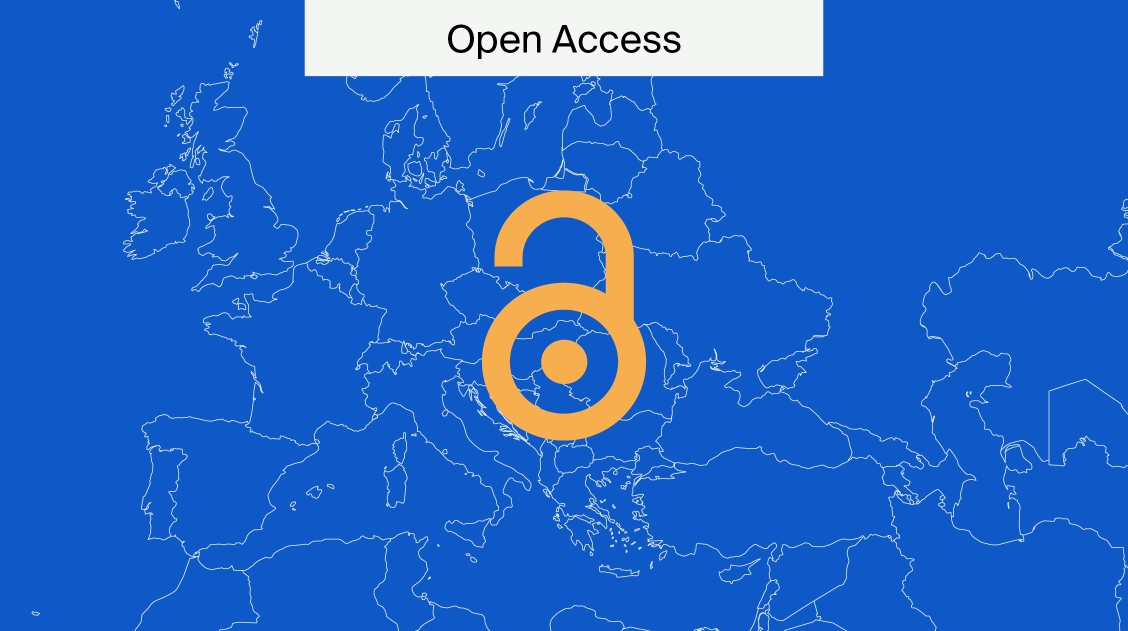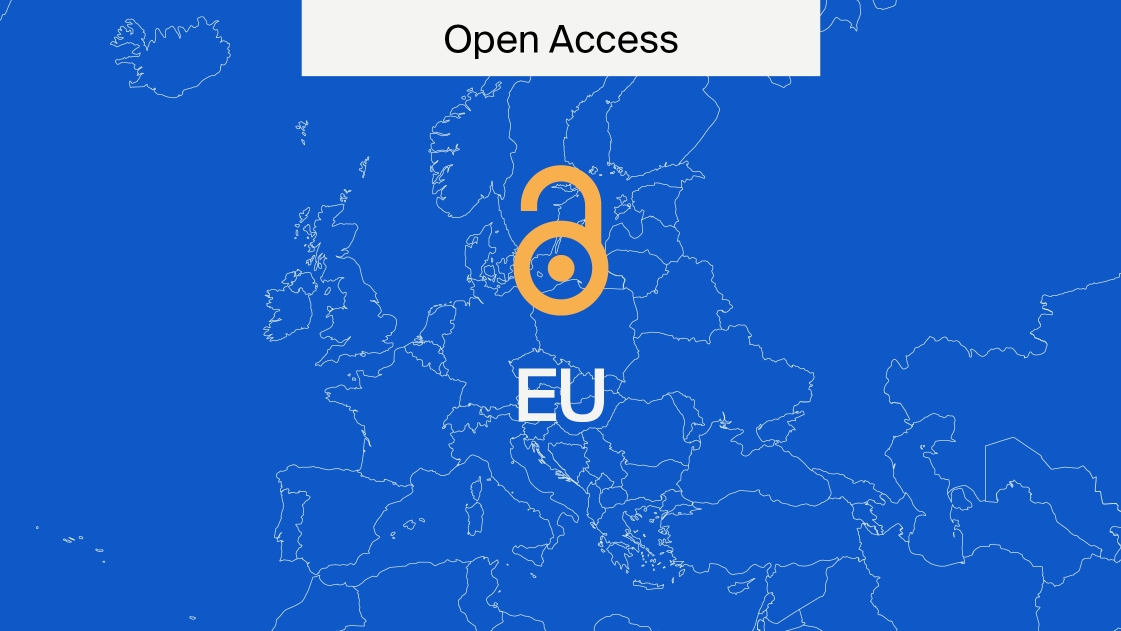
Open Access Policies and Mandates Around the World
Countries are implementing policies and mandates that are spreading Open Access around the world. It is a movement that aims to make scientific research and data accessible to everyone.
What is open access?
Simply, open access refers to a publishing model for scholarly research that makes information immediately available to readers at no cost that is free to reuse for scholarly purposes.
There are a few different colour-coded types of open access:
- Gold: This refers to publishing in a fully open access scholarly journal. There tends to be an Article Processing Charge (APC) for authors submitting work, which will be explained below. The Directory of Open Access Journals features a list of gold open access journals.
- Green: This involves depositing research into a subject-based or institutional repository. This is also known as self-archiving.
- Diamond: Work published in this form is freely available to readers and has no APC.
- Hybrid: Some traditional subscription-based journals offer authors the option to publish their submitted work in an open access form for a fee.
What are the goals of Open Access?
Simply put, some of the goals of Open Access are:
- Availability and reusability of scientific research for the public;
- Accessibility and transparency of scientific communication;
- Facilitating scientific collaboration;
- Transparency for the methodology, observation, and collection of data.
Additionally, spreading Open Access around the world helps to boost the capabilities of interdisciplinary scientific research. This is key for tackling the most pressing global issues like climate change. By eliminating the barriers to accessing and producing research, Open Access is helping to ensure that scientific research can reach its potential.
What are Open Access policies and mandates?
Open Access policies or mandates are rules or requirements set by governments, funding agencies, or institutions that require work be published in an Open Access format to varying degrees.
How strict the requirements are can vary, with some suggesting and supporting OA publication and others requiring that all publications be published in a specific repository or journal. Also, different requirements will have their own ways of achieving Open Access, whether that be via green, gold, diamond, or a mixture of all.
Furthermore, Open Access policies tend to be related to a government’s aims, whether that be to expand its research output or find ways to boost development and innovation.
Open Access policies in countries around the world
How is Open Access around the world handled? Let’s take a look.
Australia
Australia has a sophisticated network of open repositories and a focus on establishing Read and Publish agreements. There is no unifying country-wide mandate, despite demand for one.
However, two key funders and also some major institutions have mandates.
The National Health and Medical Research Council (NHMRC) requires that “all peer-reviewed publications arising from NHMRC-funded research be made Open Access immediately upon publication”. Further, the Australian Research Council (ARC) mandates that all research outputs that come from ARC funding must be made accessible within 12 months from the date of publication.
Many Australian universities have OA policies or statements, with support from libraries and library associations across the country.
ARROW, established in 2003, is a national project implementing institutional repositories across Australian universities. This project has ensured that there is adequate infrastructure across the country for academic institutions to have their own repositories.
In short, there is strong infrastructure and demand for OA in Australia. However, its lack of unifying policy and focus on Read and Publish agreements draws criticism from some organisations.
Learn more in our article Open Access in Australia.
Brazil
There is no formal open science policy or long-term strategy in Brazil. However, Brazil has many initiatives led by public research and education institutions promoting Open Access. After a decade of funding cuts and uncertainty, the government is beginning to refocus on science and education, which will likely lead to the further development of Open Access in Brazil and across Latin America.
Canada
Canada is expanding its Open Access policy. Between 2008 and 2015, the Canadian government was expanding its Open Access requirements extensively, but this slowed down. The 2020 Roadmap does, however, seem to reflect a renewed interest in OA policy, likely motivated by the pandemic.
The 2020 Roadmap aims to achieve Open Access in Canada by default without an embargo period for federally funded scientific and research outputs. Similarly, Canada’s main funding agencies, which currently have a 12-month embargo period, will require embargo-free Open Access publication by the end of 2025, reflecting the USA’s timeframe. Open Access is a key focus for the Canadian government presently.
China
Open Access in China continues to grow at a rapid pace. This growth can be attributed to the State’s commitment to research and development and policy “requiring the promotion of open science”. Current laws outline the need for consistency and cooperation across research. Accordingly, the State will be establishing consistent policies across government agencies, especially those related to Open Access, as it pursues “self-reliance”.
European Union
A key part of the EU’s research and innovation strategy revolves around Open Access. Horizon Europe and Plan S are the main components of Open Access in the EU. Firstly, Horizon Europe is a funding programme that aims to encourage collaboration whilst tackling global challenges. Open Access is mandatory for all researchers who receive funding.
Plan S, on the other hand, helps to streamline Open Access policy by providing ten guiding principles around copyright, transparency, and criteria, among other things. In 2021, it mandated that all funded research be made Open Access.
France
Open Access has a long history in France. And, as part of the EU, France is part of the international initiative cOAlition S, which is built around Plan S.
France’s leading funding agencies require that scholarly publications financed by public funds must be made publicly accessible and reusable. The Law for a Digital Republic in 2016 established the right for publicly funded researchers to openly archive a copy of their work even if they signed a copyright transfer agreement.
The Second French Plan for Open Science Open Access requirements can be satisfied by publishing the text in an OA journal or placing it in an open public archive such as HAL. This is reflected in the aim to achieve 100% OA publication in France by 2030.
There is likely to be a Third French Plan for Open Science, as the Second Plan covers 2021‒2024. This will likely be developed in line with updates to the EU’s policy.
Germany
Although Germany lacks a uniform Open Access policy, it has a sophisticated OA culture that involves various initiatives centred around developing robust strategies.
The Federal Government aims to “support the transformation to Open Access in a sustainable, reliable, and appropriate manner”. Therefore, the different federal states and institutions across Germany are encouraged to pursue OA in their own way.
The Federal Ministry of Education and Research (BMBF), Deutsche Forschungsgemeinschaft (DFG, the German Research Foundation), and Max Planck Society all similarly do not mandate OA publication but provide funding support for this who wish to publish in a journal with article processing charges.
Given its success, Open Access in Germany will likely continue to lack any official mandates or participation in Plan S. Instead, the government will focus on maintaining diversity across the scholarly publishing landscape, allowing different federal states to maintain open principles using their own unique approaches.
India
India has a strong community-driven Open Access community and serves as a leader in the Global South. Interestingly, the primary thrust of India’s Open Access requirements have been for Green OA, which requires the depositing of preprints or complete manuscripts into repositories. This likely reflects the greater financial burden of other publishing models for Indian institutions and scholars.
There is no national policy for OA like in many other countries. However, there is government-level motivation to go further than green OA and create a centralised system. The Science, Technology, and Innovation (STI) Policy 2020 reflects an impulse to centralise its research infrastructure and create access through alternative means before mandating any particular approach.
Italy
Italy has a strong open science culture that has grown consistently, with support from the community, government, and European Union.
Italy participates in various international initiatives relating to Open Access.
- Plan S.
- European Open Science Cloud.
- Horizon Europe.
In 2013, the Italian Parliament passed a law that requires the results of research funded by at least 50% of public funds must be made Open Access.
In 2021, the Programma nazionale per la recerca 2021–2027 was published by the National Research Programme (PNR).
The Plan centres around five key aims:
- Open Access to scientific publications.
- FAIR research data.
- Reform research evaluation.
- Participate in broader open science culture.
- Build infrastructure.
This comprehensive plan aims to support researchers in a sustainable transition to open science.
Italy’s Open Access community is growing gradually and consistently. If you want to learn more, visit our article Open Access in Italy.
Japan
Japan is expanding its Open Access policy. Since 2013, Open Access has been regularly discussed at a policy level, especially in relation to innovation. But policies have been less restrictive and slower than in other countries, like the USA. However, by 2025, it will be required that articles resulting from nationally funded research in Japan must be made Open Access immediately on publication.
Open Access also links to other Japanese initiatives, like boosting its international influence in science and technology research. Therefore, it’s likely that Japan will further solidify and develop its Open Access infrastructure, particularly around data, and use this to meet its aims of boosting its global research presence.
Mexico
Mexico is a leader of Open Access in Latin America.
In 2014, the Mexican government passed a law requiring free access to scientific and academic works that received public funding.
The President explained how the legislation will
further democratize the use of the information to allow Mexican free access to scientific and academic production financed partially or wholly with public funds.
The country has a strong repository infrastructure all linking to the National Repository, which, as of January 2025, has 167,814 information resources and is connected to 108 institutional repositories. Mexico is an active participant in various international open science agreements that have accelerated the adoption of OA principles.
Mexico will continue to participate in international initiatives and grow its distinct non-commercial OA infrastructure where academic institutions play a leading role.
Learn more about Open Access in Mexico.
Nigeria
Open Access in Nigeria
Nigeria has a range of community- and organisation-led open science initiatives.
These aim to build infrastructure, develop skills, and promote Open Access in Nigeria, whilst responding to challenges like lack of internet access and linguistic barriers.
LIBSENSE is an African initiative that provides framework and support for libraries. In 2024, LIBSENSE developed a model open science policy for Nigeria. The model policy promotes openness at all levels, including scholarly communications, educational resources, repositories, and governance.
There are various repositories in Nigeria:
- National Repository of Nigeria
- Covenant University Repository.
- University of Ibadan Open Access Repository (UISpace).
- Ladoke Akintola University of Technology (LAUTECH).
- University of Lagos (UNILAG).
There is work being done by various initiatives, most notably LIBSENSE, to lay the foundations for an open science policy to be developed.
In summary, the most highlighted focus areas include:
- Increasing awareness about openness and improving digital literacy.
- Identifying infrastructure gaps and addressing them.
- Bringing together the scientific community.
- Ensuring there are adequate incentives for publishing Open Access.
- Creating national platforms for open science and Open Access publishing.
Learn more about Open Access in Nigeria.
Norway
Norway is a leader in establishing incremental but comprehensive Open Access policies.
As a participator in Plan S, funded research in Norway must be made openly available immediately upon publication. It also participates in the European Open Science Cloud and Horizon Europe.
Further, the Research Council of Norway also covers costs for OA publication, including APCs, as part of the indirect costs to the institution where the researcher is employed.
Sikt, the Norwegian Agency for Shared Services in Education and Research, is the national coordinator for Open Access and lead negotiator of consortia agreements. It hosts both CRISTIN and NORA, which are the leading aggregators for research in Norway.
Norway will likely continue to align with European policy and support researchers with funding and infrastructure.
Learn more in our article Open Access in Norway.
Saudi Arabia
Saudi Arabia does not have an overarching Open Access mandate or any specific requirements at a national level. It does, however, have some specific open science requirements that relate to its Vision 2030 initiative.
The Research, Development, and Innovation Authority (RDIA) recently introduced a policy requiring government-funded research infrastructure to be made OA. Researchers are not required to but are ‘encouraged’ to share their data in an OA form.
Furthermore, there are a range of open education initiatives in Saudi Arabia. These include the Center for Society and Literacy Awareness, the Open Data Platform, and the Saudi Open Educational Resources Network.
OA policies vary by university, but there are no strict mandates at any currently. The KAUST has the most developed program. The KAUST Open Access Publishing Program supports its researchers by establishing a range of OA agreements with publishers to cover or discount article processing charges (APCs). KAUST is just one example of the Saudi universities with partnerships with MDPI.
In the future, it is likely that Saudi Arabia will further develop its open science approach to find more ways to increase access to educational resources and research infrastructure. If you want to learn more, read out article Open Access in Saudi Arabia.
Singapore
There is no national Open Access mandate in Singapore. However, leading funding bodies have them.
The following funding bodies require Open Access 12 months after publication:
- National Research Foundation (NRF)
- Agency of Science, Technology, and Research (A*STAR)
- National Medical Research Council (NMRC)
There are also a range of university policies and repositories available for researchers based in Singapore. These extend into open science practices, such as data and data management plans.
Large repositories include:
- National Institute of Education Digital Repository.
- Nanyang Technological University DR-NTU.
- National University of Singapore ScholarBank@NUS.
- Singapore Institute of Technology IRR.
- Singapore Management University InK@SMU.
There is a solid infrastructure for green Open Access and support for publishing gold from the funding bodies.
Learn more about Open Access in Singapore.
South Africa
Recently, Open Access has grown in South Africa. But, there are some major obstacles to overcome, including the lack of a national policy.
The main emphasis over the last 20 years has been on developing institutional- and national-level repositories and OA journals. These are integrated into the SciELO platform.
South Africa also participates in a range of international OA initiatives, including OA2020, African Journals Online, African Open Science Platform, and AfricArXiv.
A 2023 briefing document published by The Academy of Science of South Africa (ASSAf) outlines the next steps for OA.In it, leading institutions pledge to ensure access to research for all South African scholars and students.
Learn more in our article Open Access in South Africa.
South Korea
South Korea has a strong Open Access community that is likely to receive support from government policy soon. Since the 1990s, the Korean government has invested in infrastructure and services. However, there is a lack of any comprehensive national policy on OA or open data.
The cooperative organisation Open Access Korea supports the community in diverse ways. Their influence is seen in the Korean National Open Access Policy Forum in 2021, which was a turning point. It is the first national-level discussion on the topic.
Also, from 2024, South Korean researchers will be able to apply for grants from the EU’s Horizon Europe which requires all research be published as OA. Their joining reflects the government’s broader aim to open its research and innovation system to the world.
Currently, the Ministry of Science is considering an Open Access mandate. Therefore, it is likely that some form of policy or mandate will be introduced soon.
Switzerland
Switzerland has a decentralised education and research system organised under the body swissuniversities and supported by SNSF, the country’s leading research funder. These bodies navigate an academic community with several languages and foster collaboration around Open Access.
The country has developed a robust Open Access infrastructure that has enabled it to rapidly increase its publication of freely available scholarly research. Moreover, it closely collaborates with the EU despite not being a member.
The country published an updated Open Access Strategy in 2024. It aims to make all publicly funded scientific publications freely accessible by 2032. Publications must be immediately available in a machine-readable format, free of charge, with no embargo, and under an open license. How this is achieved is up the scholar or institution, as the Strategy seeks to encourage diversity by not publishing an action plan. Instead, it encourages actors to implement open science individually.
You can expect further collaboration with higher education institutions and other bodies as Open Access in Switzerland refines its infrastructure and requirements and with the EU.
Spain
Spain, as part of Plan S, aims to support Plan S in the movement towards a research model based on Open Access results and data. In 2023, the Spanish government approved its first national open science strategy. This four-year plan has a €23.8 million annual budget. Its aims include establishing infrastructure and proper management, and ensuring that Open Access in Spain is made the default for publicly funded scientific publications.
United Kingdom
In 2022, UK Research and Innovation (UKRI) implemented a single Open Access policy across all its research councils. This required peer-reviewed articles to immediately be made Open Access. Generally, UKRI aligns with Plan S. However, UKRI is ahead of Plan S in that it will require all monographs, book chapters, and edited collections from 1 January 2024 to be made Open Access within 12 months.
Furthermore, in 2023, a new deal for the UK to rejoin Horizon Europe was established, enabling UK scientists to have access to the world’s largest research collaboration programme. This all links with the current UK government’s goal to ‘Build Back Better’, which includes becoming a science and tech superpower by 2030. Maintaining the culture of Open Access in the UK is central to this, as its leading funding agencies continue to deepen requirements for Open Access.
United States of America
Since 2011, the percentage of articles written in subscription-only journals has declined in the USA. Open Access in the USA has continued to grow. This growth skyrocketed with the USA government mandating that all US-funded research must be made Open Access by the end of 2025. This reflects the country’s aims to accelerate scientific discovery and also lower the barriers of access for all.










